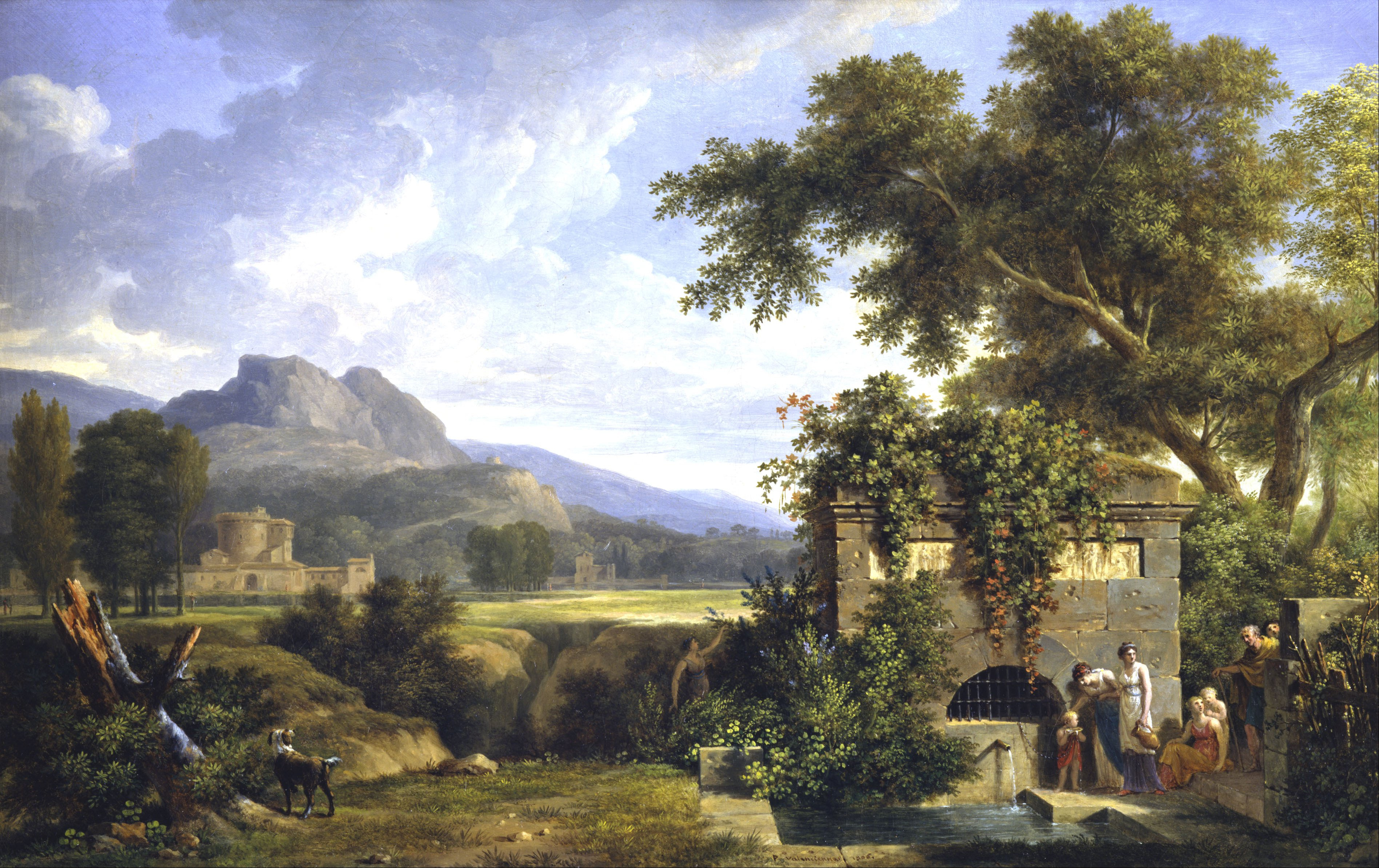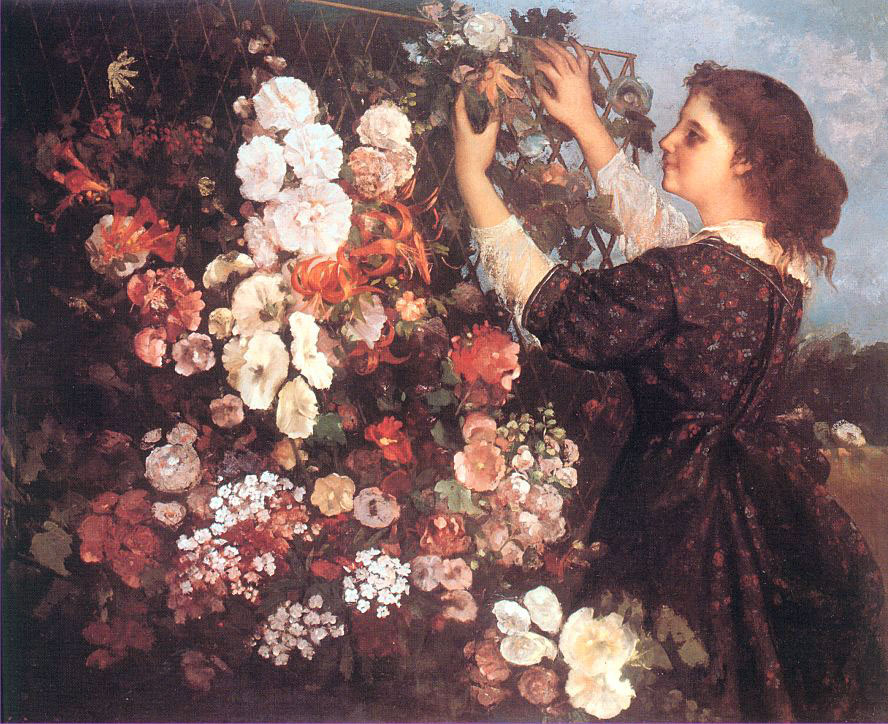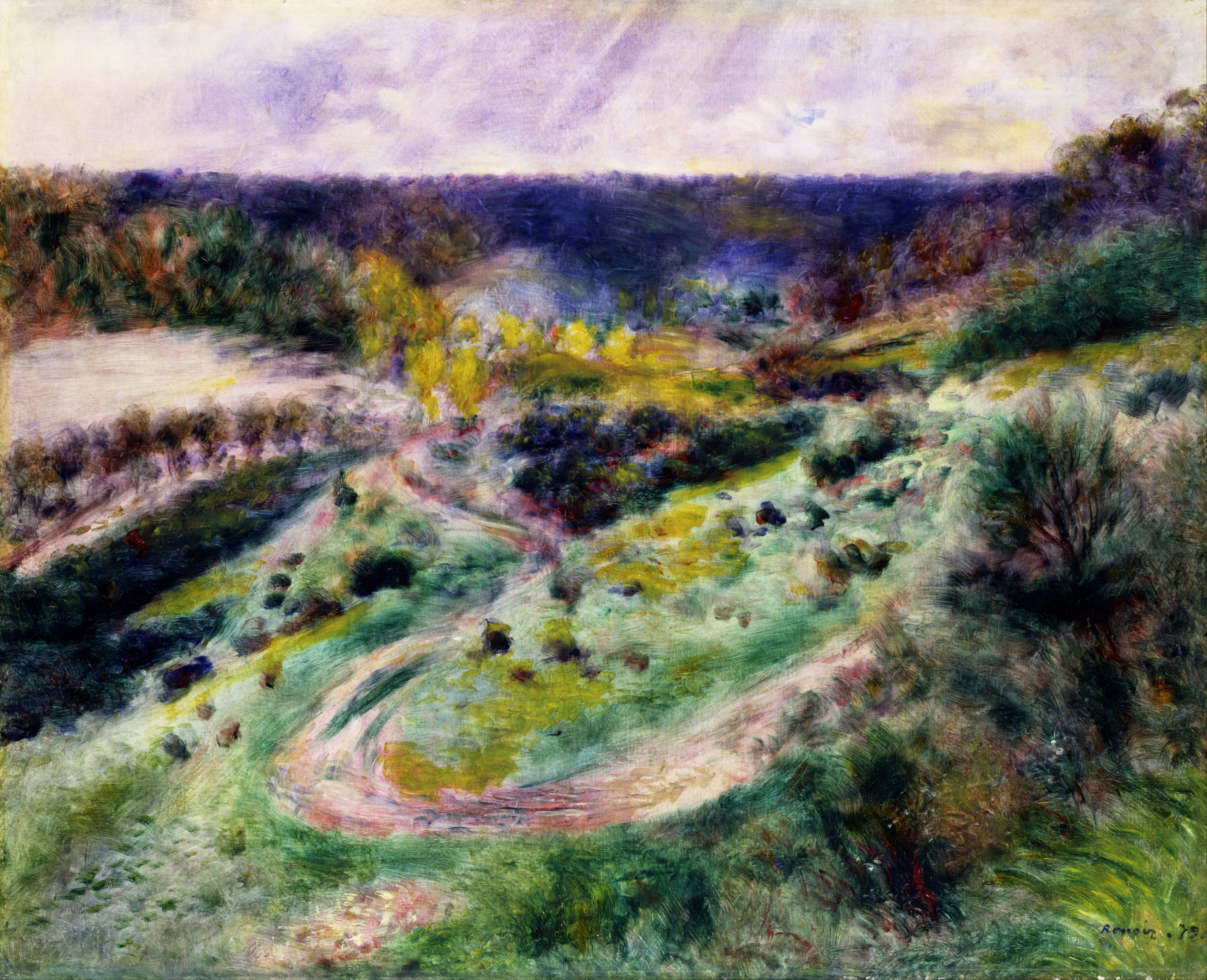Works
by some of France’s most celebrated painters are featured in From the Collection: 300 Years of
French Landscape Painting, a new
exhibition open July 17 – October 11 at the Toledo Museum of Art. Curated by Lawrence W.
Nichols, William Hutton senior curator
of European and American painting and
sculpture before 1900, this small, insightful show offers
a chronological survey of the French
approach to painting landscape .
“Drawn entirely from the Museum’s collection, the exhibition includes a single, stunning example selected from each of the many styles of representation that define the tradition of rendering nature,” Nichols said.
Beginning with Claude Lorrain’s 17th - century classicism
Claude Lorrain - Landscape with Nymph and Satyr Dancing
and François Boucher’s Rococo fantasy,
Pierre-Henri de Valenciennes (Neo classicism),
Pierre-Henri de Valenciennes - Classical Landscape with Figures Drinking by a Fountain
Pierre -Etienne-Théodore Rousseau (Barbizon School ),
Pierre-Étienne-Théodore Rousseau (French, 1812–1867), Under the Birches, Evening, oil on wood panel, 1842–43. 16 5/8 x 25 3/8 in.
Gustave Courbet (Realism),
Gustave Courbet The Trellis (Young Woman Arranging Flowers)
Pierre-Auguste Renoir (Impressionism)
and concludes with Paul Cézanne (Post - Impressionism).
Avenue at Chantilly landscape painting (1888) by Paul Cézanne at Toledo Museum of Art
“This exhibition is unusual in that paintings spanning three centuries are being installed chronologically in the gallery. Visitors will be able to see the common threads among these artists as well as the emergence of new styles,” Nichols noted.
Among the works displayed are the Museum’s recently acquired
Charles – François Daubigny painting, Auvers, Landscape with Plough , in which the French countryside is realistically captured , and
Renoir’s Road at Wargemont, which focuses on the effect of light and color in nature.
“Daubigny is considered to be part of the Barbizon School, but in this particular painting you can see the influence of Impression ism emerging in his work. Renoir paints a real place, but he is more interested in using emotional means to express it,” Nichols said , comparing them .
“Drawn entirely from the Museum’s collection, the exhibition includes a single, stunning example selected from each of the many styles of representation that define the tradition of rendering nature,” Nichols said.
Beginning with Claude Lorrain’s 17th - century classicism
Claude Lorrain - Landscape with Nymph and Satyr Dancing
and François Boucher’s Rococo fantasy,
François Boucher - Mill at Charenton
it continues through the 19th century withPierre-Henri de Valenciennes (Neo classicism),
Pierre-Henri de Valenciennes - Classical Landscape with Figures Drinking by a Fountain
Pierre -Etienne-Théodore Rousseau (Barbizon School ),
Pierre-Étienne-Théodore Rousseau (French, 1812–1867), Under the Birches, Evening, oil on wood panel, 1842–43. 16 5/8 x 25 3/8 in.
Gustave Courbet (Realism),
Gustave Courbet The Trellis (Young Woman Arranging Flowers)
Pierre-Auguste Renoir (Impressionism)
and concludes with Paul Cézanne (Post - Impressionism).
Avenue at Chantilly landscape painting (1888) by Paul Cézanne at Toledo Museum of Art
“This exhibition is unusual in that paintings spanning three centuries are being installed chronologically in the gallery. Visitors will be able to see the common threads among these artists as well as the emergence of new styles,” Nichols noted.
Among the works displayed are the Museum’s recently acquired
Charles – François Daubigny painting, Auvers, Landscape with Plough , in which the French countryside is realistically captured , and
Renoir’s Road at Wargemont, which focuses on the effect of light and color in nature.
“Daubigny is considered to be part of the Barbizon School, but in this particular painting you can see the influence of Impression ism emerging in his work. Renoir paints a real place, but he is more interested in using emotional means to express it,” Nichols said , comparing them .






